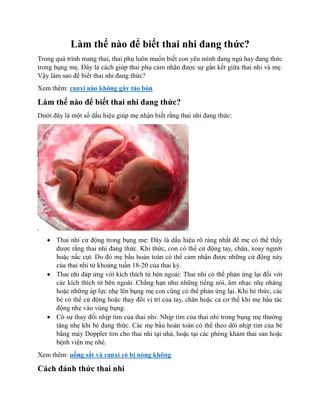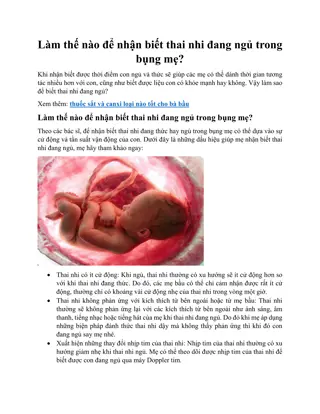Understanding the Importance of Planning in Management
Planning in management is a crucial function that involves deciding in advance what needs to be done to achieve organizational goals. It is future-oriented and helps organizations navigate the present while anticipating the future. Various definitions of planning by management experts highlight its significance as a primary function of management that guides decision-making processes. The nature of planning underscores its goal-oriented, intellectual, and continuous nature that permeates all levels of management. Embracing planning as an integral part of management ensures organizations are well-prepared to handle challenges and seize opportunities in an ever-changing business landscape.
Download Presentation

Please find below an Image/Link to download the presentation.
The content on the website is provided AS IS for your information and personal use only. It may not be sold, licensed, or shared on other websites without obtaining consent from the author. Download presentation by click this link. If you encounter any issues during the download, it is possible that the publisher has removed the file from their server.
E N D
Presentation Transcript
Planning Dr. Shubhada Ponkshe
Definition Cont-- NURSE MANAGER: person who is responsible for translating the administration's vision into operating plans and acting in the middle and first- line levels of hierarchy.
MEANING OF PLANNING Planning is deciding in advance what should be done. It is future oriented. Planning is a technical managerial function that enables organizations to deal with the present and anticipate the future. It is the first and fundamental function of management because all other management functions are dependent on it. Cont---
DEFINITIONS OF PLANNING According to Koontz and O Donnell Planning is deciding in advance What to do? (Aim) How to do? (Practice) When to do? (Time) Who is to do? (Workers) It bridges the gap from where we are to where we want to go .
DEFINITIONS OF PLANNING CONT--- Planning is deciding the best alternative among others to perform different managerial operations in order to achieve the predetermined goal - Henry Fayol. Planning is a mental predisposition to do things in orderly way, to think before acting and to act in the light of facts rather than guess - Urwick.
NATURE OF PLANNING (BASIC CHARACTERISTICS OR FEATURES OF PLANNING) 1. Planning is the primary function of management 2. It is goal-oriented 3. It is all-pervasive 4. It is an intellectual activity 5. It is future oriented 6. It requires an integrated approach 7. It is a continuous process 8. It involves decision making Cont---
It is all-pervasive: By this we mean that planning is done by everyone at every level of management, namely top, middle and lower levels. It is an intellectual activity : Planning is a mental activity. It involves application of mind and intelligence to attain, in a systematic manner, the organisational objective. Cont---
It is future oriented :Planning is required to attain the future goals of an organisation. However, past happenings provide the basis for plans. As future is uncertain, a plan must make suitable provisions to meet any crisis. It requires an integrated approach: There must be a link between the plans of different departments. The production plan of a business must be in tune with its financial plan. The marketing plan, likewise must be in tune with the production plan and vice versa. Cont---
It is a continuous process : It means that a stage will never come when the need for planning will not be felt at all. Planning is required as long as we live in this world. As far as business is concerned, planning is needed as long as there are business activities. It involves decision making : Planning involves making choice out of certain alternative courses i.e., decision-making. When there is only one way of doing something, there is no need for planning at all. Cont---
The characteristics of a good plan Cont--- 1. Plan should be-based on a clearly defined objectives. Objectives outline the intentions that the planers along with members of the organizations, hope to achieve. 2. Therefore, objectives need to be communicated to all the members of the nursing staff and others. 3. Plan should be simple, unambiguous, and free from complexities which may lead to wastage of resources. 4. A simple plan leads to success and achievement of laid down objectives.
The characteristics of a good plan Cont--- 5. Plan should be based on the process of investigation for activities of the various nursing members so as to set standards to assess quantity and quality of performance. 6. Plan should be flexible to adapt to different emergencies and changing situations. 7. Plan should be balanced so that it can be operated effectively within the total purpose of the health agency. 8. Plan should be realistic, based on verifiable facts.
Purpose and Importance of Planning 1. Provides framework for giving directions to the different functions within the organization thus establishes coordinated efforts. 2. Reduces the impact of change. 3. Minimizes risk of uncertainty. 4. Leads to effectiveness & efficiency. 5. Help to set standards & target. Cont---
Purpose and Importance of Planning 6. Helps to chalk out the sequence of steps in the course of action 7. Avoids overlapping of activities. 8. Ensures order and control planning is Necessary for organizing, staffing, directing, coordinating and controlling.
Types of planning The most popular way to describe planning is by their: 1) Breadth (strategic. versus operation) 2) Time (short term versus long term) 3) Specificity (directional specific) 4) Frequency of use (single use versus standing) Cont---
Categories in health care Planning 1. Strategic planning 2. Operational planning These planning classifications are not independent. Strategic plans are long term, directional and single use. Operational plans are short term, specific and standing. Cont---
Strategic planning Strategic planning is not based on facility oriented services but on market oriented i.e., in response to the needs of the community. Thereby, the hospital is economically survivable, and the preparation leads to a short range (2-3 years) and long range (5-6 years) strategy. Therefore, it is important to involve experts in the field of health, nursing, economics, administrator as consultant. Cont---
Strategic planning Cont--- The process involves to find answers as to 1. What services are needed?". 2. "Who will purchase them?", 3. Where would the nursing services like to be in ten years? 4. How many departments? 5. What type of clients will be there? Cont---
Activities involved in Strategic Planning Detail opportunities and threats (SWOT) of organization both internal and external environment. analysis of strengths, weakness, SWOT 1. Strength: Any activities the organization does well or any unique resource it has. 2. Weakness: Activities the organization does not do well or resources it needs but does not possess. Cont---
Activities involved in Strategic Planning 3. Opportunities: Positive trends in external environmental factors. 4. Threats: Negative trends in external environmental factors. Developing philosophy and formulation of policies and objectives on the basis of analysis of the organization. Allocation of resources, assign responsibilities. Evaluation of activities to increase efficiency. Providing proper direction to avoid duplication of services.
Operational planning Operational planning is done at the lower organizational level generally, focused on programme formulation and implementation. It is concerned with implementing strategic planning in all its components at the operational level. It specifies the details of how the over all goals are to be achieved. Usually the operational planning is short term planning and is under taken by middle or supervisory level personnel. Nurse managers are more likely to be involved in the operational or short range planning. Cont---
Operational planning focuses on Programme formulation and implementation. Planning for a few months to a financial year. Planning for details budgeting, provision for short range goals which are to be achieved within given period. Extensional aspect of long range plan. In nursing situation, budgeting time and other provision for providing nursing care according to the events and situations.
Steps to planning Analysis of the situation Identifying priority problem Formulating objectives Setting goals Reviewing limitations and constraints Laying down operational policy and system Writing down the plan.
Planning in Nursing services The responsibility of overall planning lies with the top-level authority i.e., the hospital management board, board of trustees, committee of management, or a government department. In the plan the nursing service department is delegated to the director of nursing service, or chief of public health nursing (in a community health set-up).
PLANNING FIRST ELEMENT OF NURSING ADMINISTRATION Planning in nursing means to decide in advance what is to be done. It charts a course of actions for the future. It is an intellectual process and it aims to achieve a coordinated and consistent set of operations aimed at desired objectives.
Steps of planning nursing services Formal planning is a systematic process. It consists of five guidelines. These guidelines provide a general pattern of rational planning. 1. Situation audit or environmental assessment : It analyzes the Past, current and future forces that affect the organization. Expectation of outside interests such as government officials, insurance companies and consumers are sought. Expectations of inside interests such as nurse, doctors, administrators and other staffs are collected. Environment, demographic, technological factors should also be considered. resources, legal,
Steps of planning nursing services 2. Establish Objectives: Every plan has the primary purpose of helping the organization succeed through effective management. Success is defined as achieving organizational objectives. These are performance targets, the end results that managers seek to achieve. 3. Involve management and staff: Involving a greater number of managers will result in better plans and more wide spread acceptance of objectives. Delegates the authority and responsibility in writing to members of her staff. Cont---
4. Develop alternatives : A successful planning process will generate several options for manages to consider. These options are alternative courses of action that can achieve the same result. 5. Communicates plan: Objectives are written and plans are documented to give employees direction. Managers communicate plans into two categories: Standing use plans and Single use plans.
Form of Standing use plans Policies Procedures Rules
Policies A standing plan that furnishes broad guidelines for channeling management thinking toward taking action consistent with reaching organizational objectives. It provides guidelines for behavior. Policies are also instruments of delegation that alert subordinates to their obligations. Effective policy statements are clear, understandable, stable overtime, and communicated involved. to everyone
Procedures Procedures are standing plan that outlines a series of related actions that must be taken to accomplish a particular task. It is an explicit set of actions, often sequential in nature, required to achieve a well defined result. Formal procedures provide specific and detailed instructions for the execution of plans. Good procedures provide a sequence of actions that once completed fulfill specific objectives, reinforce policies and help employees achieve results efficiently and safely.
Rule Rule is a standing plan that designates specific requires action. It indicates what an organization member should or should not do and allows as no room for interpretation. It is a statement that tends to restrict actions or prescribe specific activities with no discretion. Rules usually have a single purpose and are written to guarantee a particular way of behaving in a particular way.
SINGLE USE PLANS Single use plans-are those that are used once to achieve unique objectives or objectives that are seldom repeated. They are communicated through: Programs Budget Schedule
PROGRAMS Programs is a single use plan designed to carry out a special project within an organization. It comprises multiple activities orchestrated to achieve one important objective.
BUDGET Budget is a single use financial plan that covers a specified length of time. It describes in numerical terms resources allocated to organizational activities. By budgeting, managers identify resources such as money, material and human resource. It also communicates performance expectations.
SCHEDULE Schedule is a commitment of resources and labor to tasks with specific time frames.
APPROACHES TO PLANNING 1.Centralized top down planning- is the traditional approach to planning in which a centralized group of executives or staff assumes the primary planning responsibility. 2.Bottom-up planning- is an approach that delegates planning authority to division and department managers, who are expected to formulate plans under the general strategic umbrella of organizational objectives. Cont---
3. Team planning- is a participative approach to planning where by planning teams comprising managers and staff specialties initiate plans and formulate organizational objectives.
Importance of planning (Merits or advantages of planning) 1. It focuses on objective: Once the objective of the business has been fixed, the next step is to prepare a plan for its effective accomplishment. The enterprise objective cannot be realized overnight. It has to be achieved gradually over a certain period. 2. It helps to avoid wastage of resources: Planning makes it possible to make optimum use of the available resources, namely, time, money, materials and machines. This is possible as the employees and the executives know beforehand what they have to do. Cont---
3. It ensures efficiency as well as effectiveness Efficiency is ensured by doing right things and effectiveness is achieved by doing things right. Planning helps to do not only right things but also things right. Each department knows what it is supposed to do well in advance as a result of planning. 4. It reduces risk and uncertainty: Planning is for future use and future is uncertain. While planning, future uncertainties are anticipated and adequate provisions are made to meet or overcome the same. Cont---
5. It provides for co-ordination: The work done in any organisation is a team-work. Different departments participate in the process of goal attainment. Planning makes the responsibilities of each individual and department very clear. Thus, planning by explaining the responsibilities of each individual and department provides scope for co-operation and co-ordination. 6. It facilitates control: If planning is the first function of management, Control is the last function. Planning without control is useless and control without planning is meaningless. Control helps the enterprise to know whether the plan has been successfully implemented and the objective has been achieved. 7. Planning also provides scope for decentralisation : Dispersal of authority throughout the organisation is what is known as decentralisation. Once the basic and derivative plans of the enterprise have been prepared, the next step is to explain the same to all the subordinates who are going to perform the various tasks.
Limitations of planning (Drawbacks or Demerits of Planning) 1.Un certain Nature: The element of uncertainty cannot be totally eliminated in planning. Plans are meant for future use but future happenings cannot be accurately foreseen. e.g. A sudden change in the policy of the Government, loss due to natural calamities like earthquake, floods, etc., can destroy even carefully prepared plans. 2. Expensive: Preparation and implementation of any plan is expensive not only in terms of time but also in terms of efforts and money required. Cont---
3. Rigidity : It is always necessary to strictly adhere to the plan in so far as the daily work routine in an enterprise is concerned. Lack of flexibility in plans leads to monotony and boredom. 4. Loss of initiative: The staff in an enterprise shall perform their duties in the way they are expected to do in the plans. As a result, they are reduced to machines. There is no scope for the display of skills by individuals and this leads to loss of initiative. 5.Ignorance of subordinates interests: Plans are prepared to attain the organisational goal in the most effective manner. In doing so, often, the interests, preferences, capabilities and attitudes of the employees are ignored. As a result, the subordinates do not give their whole hearted support to the implementation of the plans. Cont---
Complacent attitude: There is always a feeling that once the plan is prepared, the target of the enterprise can easily be attained. The success of every plan depends much on the effectiveness implemented. A plan is only a means to an end and not an end itself. with which it is























